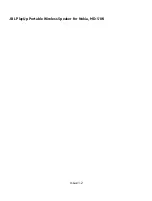
SRG-4400 User Manual (Iss. 06)
GPS Option • 14–11
Troubleshooting RF Interference
This section provides information when troubleshooting radio frequency (RF) interference.
RF Interference into the GPS/GLONASS receiver tends to be the biggest problem when
determining why the system performance is not meeting expectations. As mentioned earlier, the
GPS and GLONASS signals are at -130dBm and lower. If signals higher than this are presented to
the receiver it can be overwhelmed. The SRG-4400 can reject CW in-band jamming signals, but
would still be affected by non-CW signals.
The most common source of interference is digital noise. This is created by the fast rise and fall
times and high clock speeds of modern digital circuitry. For example, a popular net book
computer uses an Atom processor clocked at 1.6GHz. This is only 25MHz away from the GPS
signal and virtually at the same frequency as the GLONASS signal. Because of the nature of the
address and data lines, this would be broadband digital noise at a relatively high level. Such
devices are required to adhere to a regulatory standard for emissions such as
FCC Part 15
Subpart J Class B
or
CISPR 22
.
It is recommended to move the antenna away from the source of interference or shield the digital
interference to prevent it from getting to the antenna.
Summary of Contents for SRG-4400
Page 1: ...SRG 4400 Master Reference and Test Signal Generator User Manual...
Page 8: ......
Page 54: ...4 10 Operating Basics SRG 4400 User Manual Iss 06...
Page 116: ...5 62 Menu System SRG 4400 User Manual Iss 06...
Page 140: ...8 4 Certifications and Compliances SRG 4400 User Manual Iss 06...
Page 146: ...9 6 Connector Pinouts SRG 4400 User Manual Iss 06...
Page 164: ...11 14 Test Patterns SRG 4400 User Manual Iss 06...
Page 168: ...12 4 Connecting via DashBoard SRG 4400 User Manual Iss 06...
Page 186: ...14 12 GPS Option SRG 4400 User Manual Iss 06...









































